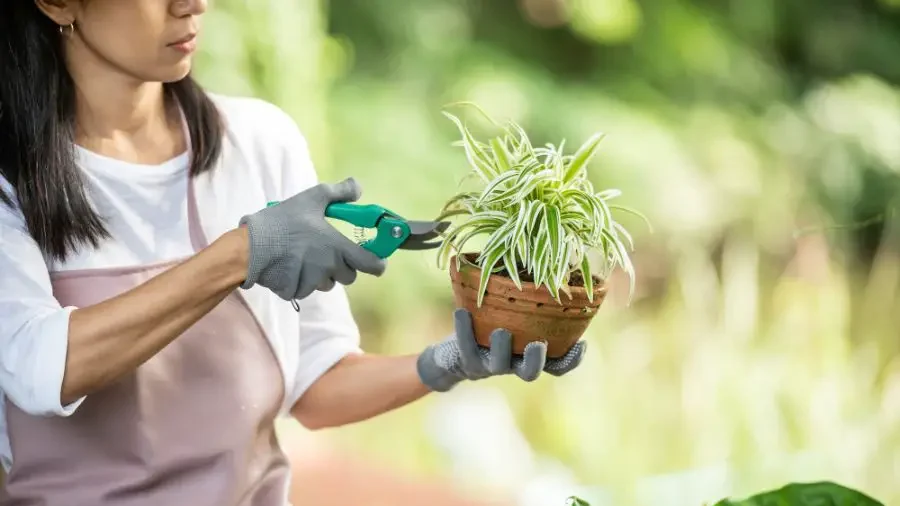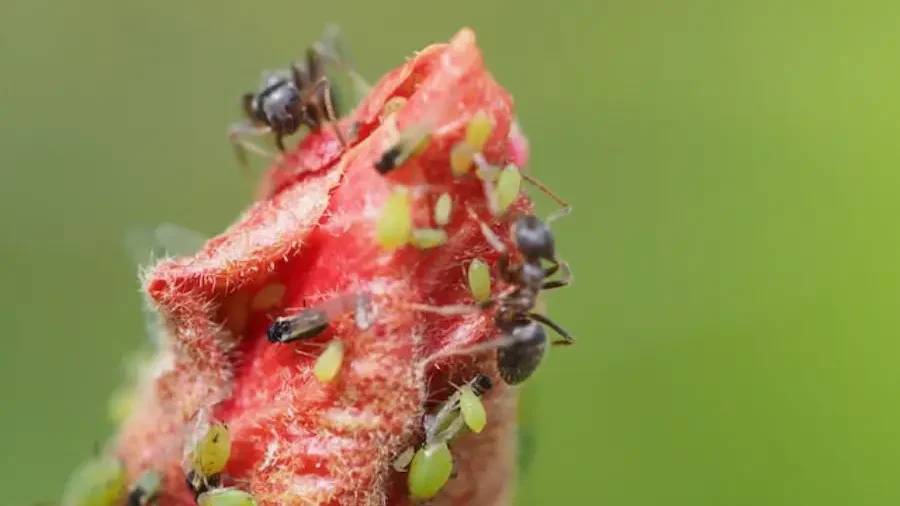Plant Dying During Flowering – Causes and Solutions

Plants are essential to our environment; they add beauty and life to any space. However, it can be frustrating when a plant starts to die, especially during the flowering stage.
There are many reasons a plant is dying during flowering, and it’s essential to identify the cause to take the appropriate steps to save the plant.
What Causes Plants to Die During the Flowering Stage?
There are several reasons why a plant might die during the flowering stage. Some possible causes include the following:
1. Nutrient Deficiencies or Imbalances
Plants need a balanced supply of nutrients to grow and flower properly. If a plant lacks certain nutrients, or if the levels of certain nutrients are too high or too low, it may struggle to bloom and eventually die.
Plants lacking essential elements cannot complete their vegetative stage or reproductive cycle. Flowering is part of it, and as a result, it shows deficiency symptoms.
Nutrient deficiency symptoms include stunted growth, yellowing of the leaves, and death of plant tissues. The yellow pigment of the leaves is caused by reduced production of chlorophyll, a pigment needed for photosynthesis.
2. Environmental Stress
Poor environmental conditions such as too little water, too hot, or too cold can affect plants directly. Exposure to extreme temperatures or harsh weather conditions can cause plant death.
Environmental stress weakens the plant making it susceptible to insect attacks or diseases. It will also delay the plants’ growth, reduce productivity and development, and in severe cases, can lead to death.
Providing proper shading and protecting plants from extreme weather can help prevent this.
3. Pests and Diseases

Pests and diseases can attack plants and cause them to become weak or die. For example, aphids, thrips, and whiteflies can all damage plants and affect their ability to flower.
When plant pests and pathogens interfere with its growth, it can damage the plant to cultivate and grow naturally. Once the plant has been interrupted by pests or insects, it cannot reach its genetic potential.
Or it dies even before the flowering stage if it’s severely damaged by pest and insect attacks.
4. Overwatering or Underwatering
Both overwatering and underwatering can stress plants and cause them to die during or even before flowering. It’s important to water plants regularly and provide them with the right amount of water based on their specific needs.
If a plant’s soil is too wet due to overwatering, it lacks oxygen, leading to the roots’ death and loss of vigor. The symptoms of overwatering in plants are stunted, slow growth, and yellowish leaves. It may suffer from leaf burn or leaf scorch.
The underwatering case is that plants had too little water. The symptoms of underwatering are the plant’s leaves feeling dry and crispy.
How To Save Plants from Dying? Remedy and Solutions
If you are having trouble with a plant dying during the flowering stage, the best solution will depend on the specific cause. If you’re not sure what’s causing the problem, you may want to try the following:
1. Check the Plant to See If There Is Still a Life
Check the stems and roots of the plants carefully. If the leaves still have some green stem and the seeds appear plump with white or tan color, it is still alive and can be revived.
When the plant is not yet dead, do other remedies below to revive them.
2. Check If the Plant Is Underwatered
Check your plant if it wilts; the leaves dry out and have a brown color at the tips, then the whole leaves turn brown, die, and drop off. Also, check the soil to see cracks and pull away from the pot edges. If these symptoms appear, it is due to underwatering.
The best remedy when a plant is watered is to soak them in the water for a few hours.
Check if the water already penetrated the cracked soil. The plant will absorb water, grow again, and ensure adequate moisture.
3. Check If the Plant Is Overwatered
If your plant has yellow, wilted leaves and moist soil, it indicates that it is overwatered. When the plant is overwatered, it will affect the roots and start to rot later.

The best solution is to change your plant’s soil and pot to save the plants from dying. After repotting your plant, make sure to water it accordingly.
4. Remove the Dead Leaves
When plants deteriorate, they will have dead leaves; get rid of them. Try to pinch the dead leaves gently but if it’s still holding on to the stem, use scissors to cut them.
It will allow new leaves to thrive, making your plants look neat. Then trim the leaves to remove all unwanted dead leaves.
5. Check the Lighting
Proper lighting for plants is an essential factor for their health. Check if your plants need full sunlight, partial sun, or direct or indirect sunlight.
You can move and place your plant in an area that can sustain the light they need to thrive.
6. Check If Your Plant Needs More Humidity
Some plants come from tropical areas and may get used to that environment. If humidity is too low, the plants will show shriveling, wilting, and browning.
If it needs more humidity, try misting your plants from time to time but ensure you don’t overdo it, or else mildew and fungus will start to grow.
7. Give Additional Nutrients
Giving additional nutrients to your plants will help them grow healthy in the growing season and enable them to produce beautiful flowers. The soil nutrients deplete over time, so you have to add extra nutrients.
You can add compost or fertilizer, but do it slowly to avoid plant shock from rapid changes. Only add fertilizer once or twice a month to avoid overdosing on the plant.
8. Apply Pesticide If It Has a Pest Infestation
If pests are attacking your plant, you can apply mild pesticides to get rid of them. Ask guidance from plant experts before using anything on your plant to avoid harming them more.
To revive the plant, you must wait for at least a month to see if it can survive. It takes a while when your plants deteriorate; it is likely the same as reviving them. You must be patient and wait for them to grow again.
But if you’ve done everything and nothing happens, you cannot revive the plant anymore. Once it happens, you can compost the plants.
Conclusion
Plants dying during flowering can have various causes ranging from environmental factors, such as overwatering or underwatering, to pest infestations or diseases. Diagnosing the problem’s root cause is important to address it effectively.
Some potential solutions include providing adequate water and sunlight, controlling pests, and applying appropriate fertilizers or pesticides. Adjust watering habits, add fertilizers or pesticides, or provide protection from environmental stressors.
Proper care and attention to the plant’s needs can help prevent issues during flowering and ensure a healthy and prosperous bloom.
We hope that the guides we provided allow you to find solutions to your dying plant in your home!